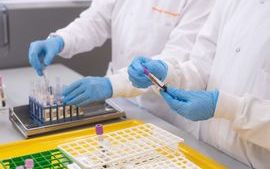- Published:
- 20 January 2025
- Author:
- Dr Bernie Croal
- Read time:
- 5 Mins

Welcome to 2025!
Firstly, a warm welcome to you all from the College to the year 2025. This edition of the Bulletin, the first for this year, focuses on paediatric pathology. While this is a relatively small specialty, its importance to and effect on patients, families and healthcare cannot be understated. If we bring prenatal, perinatal and paediatric pathology together, as we do for our specialty advisory committee, then we see a very rich, wide and complex set of overlapping sub-specialties that provides a huge variety of important services across healthcare. Finite capacity and resources, of course, mean that if one part comes under pressure, then this is felt across all related services. The challenges being faced will soon be felt across all our disciplines.
Within this edition, we focus on many things that are invaluable about paediatric pathology, such as its important role in paediatric infection practice, oral microbiology, metabolic disorders (both inherited and acquired), immunisation, childhood cancer and, of course, the vital role of paediatric and perinatal autopsy. We cannot highlight these topics without reflecting on the workforce crisis that exists.
There are many concerns across the NHS and, indeed, across wider healthcare about the increasing lack of capacity and workforce to deal with both current and future demands on services – pathology is at the forefront of such imbalance. Inevitably, it is smaller disciplines that are more at risk, such as immunology, neuropathology, forensic pathology, and paediatric and perinatal pathology.
The latter has been a persistent focus for the College in recent years. In many ways, we have witnessed a slow-motion car crash, as the number of pathologists reduce, the vacancies rise and local services collapse. Bristol, Birmingham, Leicester and Northern Ireland are all now without any paediatric and perinatal pathologists. We anticipate more services will collapse. Despite attempts to provide mutual aid from other centres, a consultant vacancy rate approaching 40% means that all services are now at risk.
Significant efforts are being made by the Department for Health, NHS England, the College and other stakeholders to explore any contingencies that can be put in place for the short term, while looking for future fixes for the years ahead. It’s very late in the day but we need to continue to try, and we will.
In recent times, we have been juggling the long-term workforce plan, the 10-year plan, the elective care plan and the AI action plan – all of which rely heavily on pathology services having the necessary services and workforce to deliver. However, the necessary investment in infrastructure, IT, automation, digital, AI and workforce has slipped way behind where we need to be.
The economy, politics and public opinion – sometimes driven by social media and misinformation – mean that the government has become hesitant and has not taken the option of increased general taxation and borrowing to create the much-needed funds to recover healthcare. This means that we are unlikely now to see the level of funding that is desperately needed to allow the expansion in either specialty training or substantive consultant posts.
The plan for pathology, therefore, is to make do with what we have, become more efficient, improve retention and make contingency plans for when we can’t do everything that is asked – those days are upon us now.
This College is creating its own plan for pathology – the Pathology Plan – that deals with the challenges we face, outlining what we can do to mitigate these issues and also highlighting and showcasing the importance of pathology. We need to demonstrate the vital impact that pathology has on patient pathways when the investment is made in the right places. But, if we cannot deliver the best diagnostics and care possible, we need to ensure we can deliver the best care that we can, given the resource envelope we have to work in.
The Bulletin will continue to play an important role in all of this, acting as one of our vehicles to showcase and disseminate information and examples of the great things that pathology is doing, can do and will do in the future.
The role of pathologists, scientists and other stakeholders is more important than ever. We need to come together to innovate, create positive outcomes and share and disseminate what is good and what works. This collective responsibility is vital for our professional wellbeing and vital for patient care. Support the College, support your profession and support healthcare.
Sustainability continues to be important for the College, for pathology services, for healthcare and for the planet. It is a pleasure to welcome Dr Shireen Kassam as our new Sustainability Lead for Pathology Practice – you can read more about her in this edition. It is important that we, as professionals, look at practices across the College, laboratories services and wider healthcare settings to ensure that environmental and sustainability issues are at the forefront of everything we do.
The healthcare outlook for the coming year – given the economy, the waiting lists, the backlogs and the absence of any signs that things will get better – remains very poor. This does not mean that pathology is failing. Every day we screen, diagnose, monitor and treat millions of patients, making a huge difference to their lives – we have a huge footprint on healthcare. We should be very proud of that.
So, while investment is slow, workforce shortages continue and new technology seems unaffordable, remember that what is difficult today will be easier tomorrow, what is expensive today will be cheaper tomorrow and what seems impossible today will happen tomorrow. Meanwhile, let’s work together, let’s collectively stand up and showcase what we can do and be ready with the argument, the business case and the enthusiasm to take the opportunities when they come… and they will come.
Return to January 2025 Bulletin




